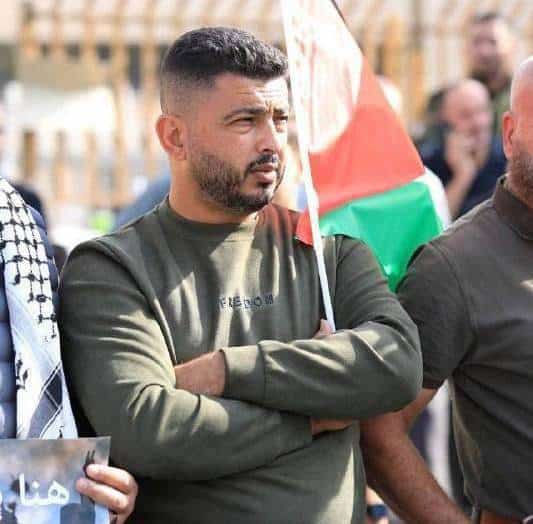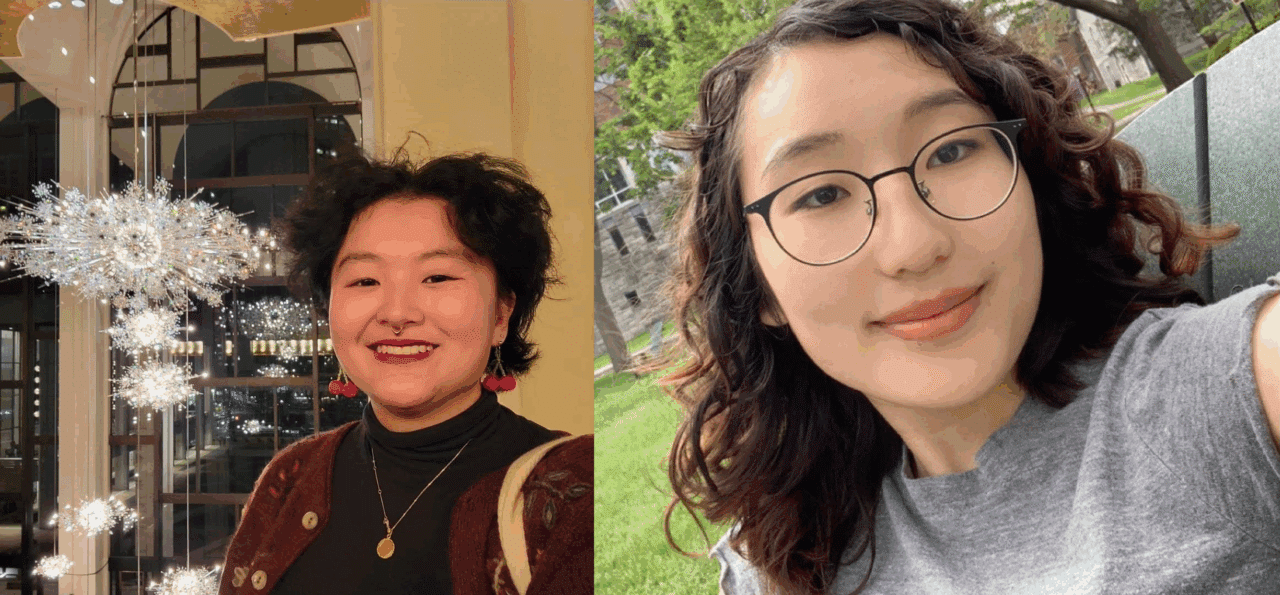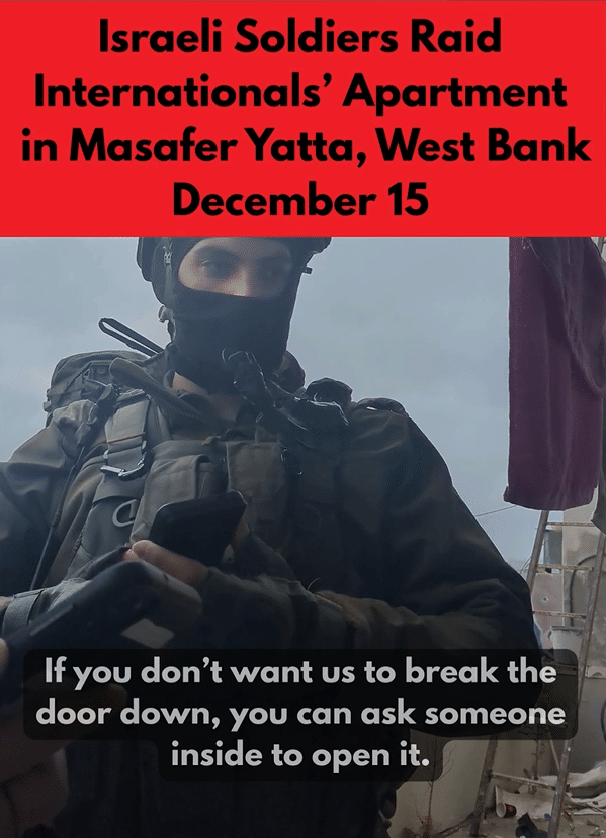Author: ISM Media
-
Court Approves 6 month Administrative Detention of Palestinian Activist Ayman Ghrayeb
December 18, 2025 The six months long administrative detention order against Palestinian grassroots activist Ayman Ghrayeb was approved by the Offer military court earlier today. The summary procedure took place in secrecy and behind closed doors, without even Ghrayeb’s lawyer having any knowledge of the allegations against him other than a vague insinuation of incitement,…
-
FOR IMMEDIATE RELEASE: Attempts to Displace Palestinian Family in al-Mughayyer Continue as US Citizens Deported after a Week of Detention
18 December, 2025 For further details:* Mia +972-53-809-7706 New York-based Irene Cho and Boston-based Trudi Frost, who were arrested by Israeli forces last Friday, remain in custody at the Givon prison after Israeli courts have summarily denied all their appeals while refusing to examine the evidence proving they have committed no offense. They are expected…
-
FOR IMMEDIATE RELEASE – A Day of Terror in Masafer Yatta: Occupation Army Brutally Arrests Elderly Palestinian Amputee and Raids Apartment of International Activists
Monday, 15 December 2025 Masafer Yatta – Yesterday morning, December 15, 2025, Israeli forces descended on Sheikh Said’s land in Rakiz, a village in Masafer Yatta. The Palestinian family had recently erected a razor wire fence to prevent settler sheep and ATVs from entering onto their land. The fence had only been there a short…



